The corollary to angina pectoris is cardiac bypass. What is the nature of angina pectoris?
Passed by and saw it and answered the question.
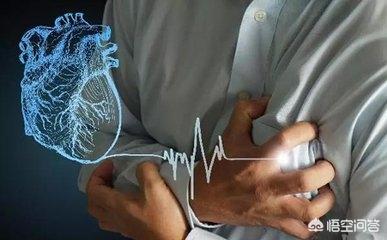
Answer the question first.What is the nature of angina?Angina pectoris is a clinical syndrome resulting from a sharp onset of transient myocardial ischemia and hypoxia due to an increase in myocardial oxygen demand (blood) and/or insufficient myocardial blood supply. Myocardial ischemia and hypoxia cause metabolites and inflammatory factors to accumulate locally in the ischemic myocardium, which stimulate visceral nerves, travel to the spinal cord, connect with surface sensory nerves, and project to the area where the surface sensory nerves are located, resulting in pain. Myocardial ischemia and hypoxia can lead to reduced myocardial contractility and cardiac electrophysiological abnormalities. Therefore.The essence of angina is myocardial ischemia and hypoxia.。
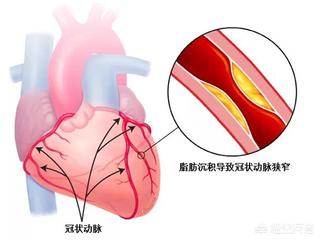
The statement that "the corollary to angina is coronary artery bypass grafting" is clearly biased.
It should be noted that(Coronary) bypass is a surgical treatment for coronary heart disease and angina pectoris,But it's not a natural consequence of angina pectoris。
Coronary artery disease and angina pectoris are treated with medications, minimally invasive transcatheter coronary balloon dilatation and/or stent placement, and coronary bypass grafting. Of these, drug therapy is the most widely used and basic treatment. This is because medication is required whether or not surgery is performed.
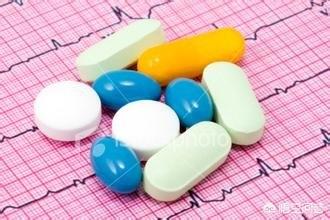
In patients with stable angina, standardized medication is all that is needed to keep the condition stable.
Coronary balloon dilatation and stent implantation enable many patients with coronary artery disease and angina pectoris to open narrowed and blocked coronary arteries and restore coronary blood flow through minimally invasive surgery, thus relieving angina pectoris.
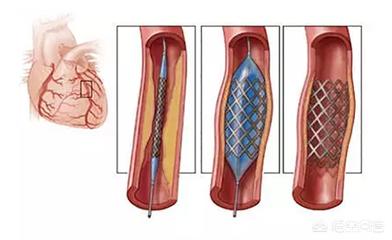
还Some angina is not caused by coronary artery stenosis., such as coronary artery spasm, coronary microangiopathy, hypertrophic obstructive cardiomyopathy, aortic stenosis or closure insufficiency, and even severe anemia and tachycardia can cause myocardial ischemia and angina episodes, and these angina patients can have no coronary artery stenosis. Therefore, coronary artery bypass grafting is not a necessary consequence of all angina.
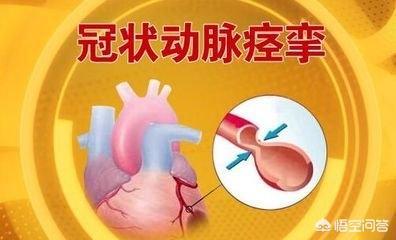
Coronary artery bypass grafting, a method of coronary blood flow reconstruction in patients with multiple coronary artery branches and multiple lesions, severe stenosis but not suitable for stent placement, but there are certain indications and conditions required.
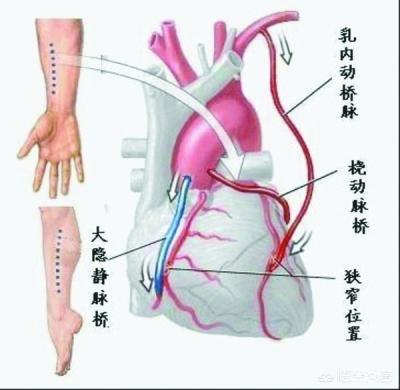
(Image from the Internet)
In the morning clinic, we saw a patient with exertional angina, a 59-year-old woman, who recently had chest pain when she walked fast, which would get better with rest.
Dr. Wang asked about her medical history, listened to her and reviewed the tests, and finally told her that the current chest pain was angina and that she should take medication to control it first.
This person is very worried and said, "What can we do after this? I don't want to put in a stent, nor do I want a bypass, nor do I want to open the chest. I feel like I'm going to cry.
Dr. Wang asked her rhetorically who said that all angina has to be stented, and who said that all angina has to be bypassed, and there is no such thing.
The older sister was instantly energized. Really? Really no stent, no bypass?
Of course it's true, especially for stable angina, with a focus on healthy living and medication.
So what is stable angina?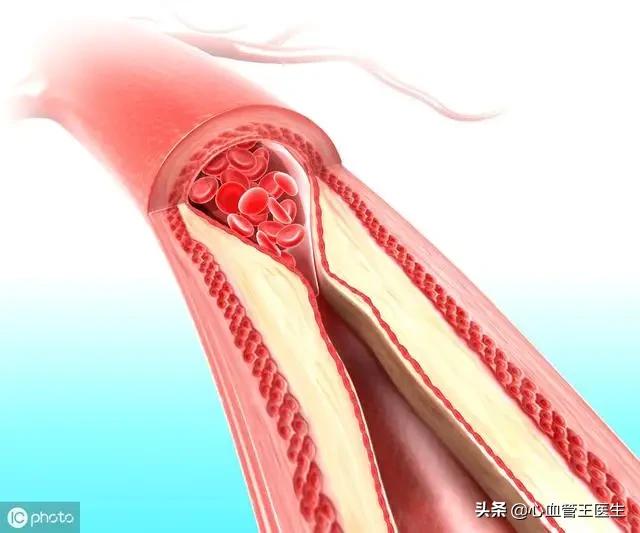
Simple to understand is relatively stable condition, not easy to plaque rupture, the formation of thrombus, causing acute myocardial infarction, so it is called stable angina. At the same time, it is also called exertional angina, simple judgment is that the patient has angina, but this kind of angina will not be attacked when resting, each angina attack is triggered, for example, after labor, after activity, after exertion, after eating a full meal, after straining to have a bowel movement, and so on, all similar exertion, angina occurring in this case, it is called exertional angina. This type of angina is relatively stable and can be controlled in the vast majority of cases with medication, without the need for stents or bypasses.
However, it is not completely absolute, especially if the exertional angina is not actively and formally controlled, it may worsen and progress to exertional worsening angina, which simply means that the original angina, which occurred only after activity, for example, angina occurs when going up 5 floors, but now it occurs when going up 3 floors, then it is necessary to visit the doctor again, indicating that the condition is worsening.
Relative to stable angina, unstable angina, a higher risk, may bleed plaque rupture and form a thrombus, causing an acute myocardial infarction, so the risk is high enough to require hospitalization, or even a stent or bypass.
So in general stable angina is relatively stable and does not require stenting or bypass, but unstable angina, if medications are ineffective, requires imaging and the decision to stent or bypass is based on the results of the imaging.
What is the nature of angina?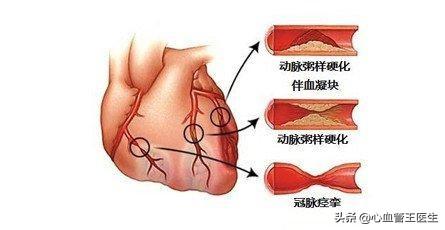
The essence of the cardiovascular stenosis, when the cardiovascular stenosis of more than 75%, in the labor, cold, irritability and so on, the heart needs oxygen will increase significantly, but the narrowing of blood vessels can not meet the needs of the heart at this time. The main heart itself needs 6 times more oxygen than other parts of the heart, so it is more sensitive to the slightest insufficiency of blood supply, it will respond, and when the myocardium lacks oxygen, it will be manifested as pain as well as the usual angina and other symptoms. So the essence of angina is myocardial ischemia, the essence of myocardial ischemia is myocardial hypoxia, the root cause of myocardial hypoxia is cardiovascular stenosis, cardiovascular stenosis to the root cause of atherosclerosis, atherosclerosis, atherosclerosis, the most important one of the reasons is unhealthy lifestyle.
At the end of the day, it turns back around and encourages you to live a healthy life and stay away from unhealthy lifestyles for the sake of you and your family's health.
(Copyright Dr. Cardiovascular Wang)
Angina pectoris is a clinical symptom, mainly manifested as chest pain or chest discomfort, is the heart ischemia reflected to the surface of the body felt pain, it is essentially due to the lack of blood supply to the myocardium, resulting in myocardial acute temporary ischemia ischemia and hypoxia. Angina pectoris can be triggered by conditions that cause a decrease in blood and oxygen supply to the myocardium or an increase in oxygen consumption.

The blood supply of the heart muscle is supplied by the coronary arteries, coronary atherosclerotic heart disease referred to as coronary heart disease, which causes the narrowing of the coronary arteries, so that the blood supply to the heart muscle is reduced, resulting in angina pectoris, and further development of serious ischemia of the heart muscle can cause ischemic necrosis of the heart muscle (myocardial infarction).
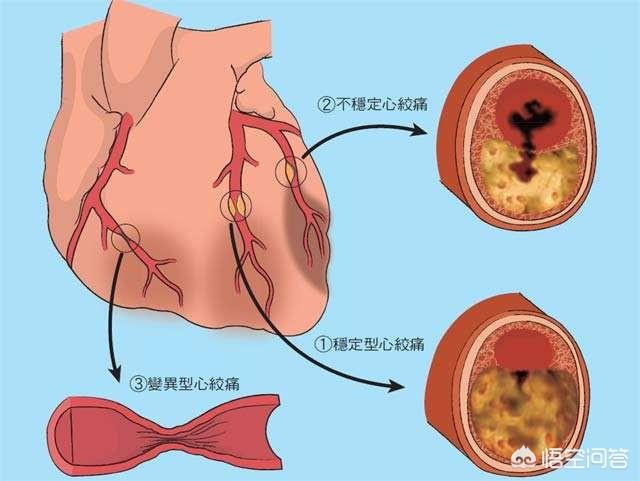
Cardiac bypass surgery involves replacing narrowed or blocked coronary arteries with other blood vessels (e.g., internal thoracic artery, saphenous vein) to improve ischemia in the heart muscle.
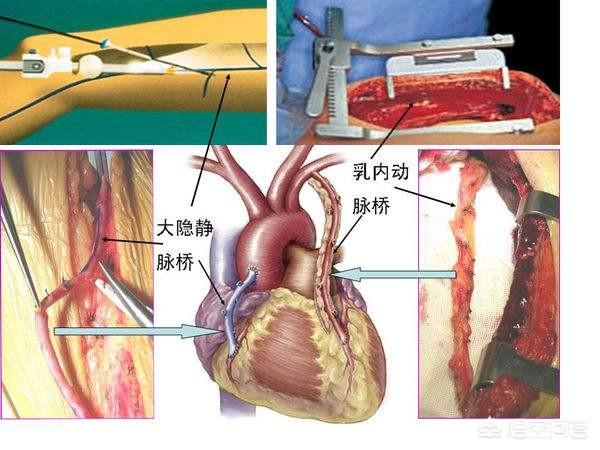
There are also interventional procedures to dilate narrowed coronary arteries or to place stents to open the coronary arteries.
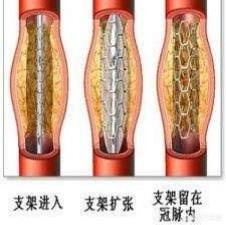
I am Dr. Shadow. The corollary to angina is not a heart bypass; angina is actually the symptom of angina that occurs when a blood vessel in the heart becomes blocked or spasms causing myocardial ischemia. Angina can be treated with lifestyle modification, medication, stenting, and possibly bypass surgery. So the end result of angina does not necessarily mean a heart bypass. The choice of treatment depends on the severity of the disease.
What is the nature of angina?
Both angina and myocardial infarction are caused by problems with the blood vessels that supply the heart muscle (coronary arteries), which causes insufficient blood supply to the heart muscle and a range of symptoms.
The most common lesion of the coronary arteries is atherosclerosis, the formation of plaque, resulting in narrowing of the lumen. It is like the water pipes supplying a neighborhood. After a long time, dirt appears and is deposited on the walls of the pipes, causing the pipes to narrow and less water to flow to the users, and there will be a shortage of water.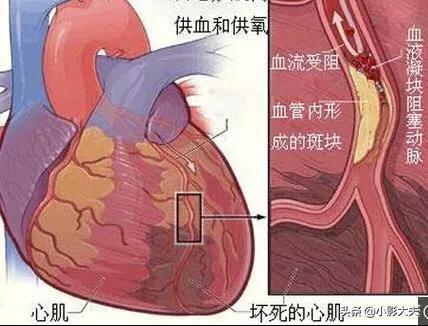
Angina pectoris, is like a narrowed water pipe, less water to the user, but there is still water, just not enough. One time there is water, one time there is no water, then the user goes to the owner and makes a noise. When there is water, they don't argue, and when there is no water or not enough, they argue. So angina is also episodic in its symptoms, aggravated by exertion and relieved by rest.
The pain of angina pectoris is mainly located in the posterior part of the sternum, can be radiated to the precordial area and the left upper limb, often occurs during labor or emotional excitement (with much blood), each attack lasts for 3 to 5 minutes, can be several times a day, or once every few days, can be relieved by resting or using nitrate drugs.
Angina treatment is more than just heart bypasses
With the above symptoms, angina should be considered and a visit to a regular hospital should be made. If the symptoms persist, you can visit the Chest Pain Center in the Emergency Department for a green channel and a quick checkup.
There are different treatment options depending on the severity of angina. Of course this process is judged by a professional cardiologist. If it is stable angina, you can go back to lifestyle, low-salt and low-fat diet, plus lowering the blood fat itding drug treatment. If it is angina obvious, persistent angina, with the possibility of myocardial infarction, then you need to do coronary angiography to see, the narrowing of the coronary artery, if it is necessary to put a stent, we must choose to put a stent treatment. If all three important coronary vessels are obviously blocked and narrowed, then bypass surgery should be chosen.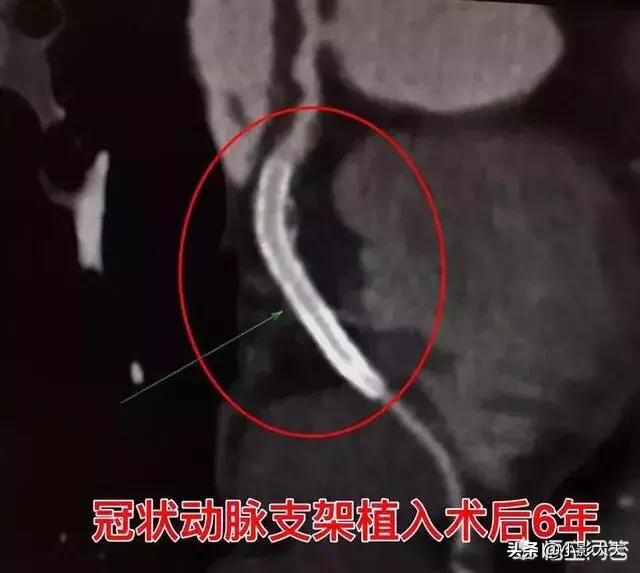
Currently, angina pectoris, myocardial infarction is commonly treated with the option of stent implantation. Bypass grafting will only be considered if the coronary stenosis is too severe for stenting. The specific treatment plan can only be determined after the situation has been evaluated by a specialist.
I am.Dr. ShadowPlease follow me if you want to learn more about medicine.
Nothing is inevitable, angina is a common clinical manifestation of coronary artery disease, but bypass is not a conventional treatment measure, it is a kind of emergency measure applied in the last stage, and its priority is also behind the coronary stent implantation surgery, and coronary artery disease patients abound in the clinic who have not had bypass surgery.
Many diseases have pain symptoms, they seem to be the same, but in fact they are very different, combined with the pain site, pain time, pain nature and other conditions, many diseases can actually be a certain degree of prediction, and angina pectoris is the most common clinical manifestation of coronary heart disease, the vast majority of patients tend to be triggered by physical activity, over-excitement, fullness of food and cold, the onset of the attack will beThere is a dull, squeezing sensation, a dull pain rather than a sharp, stabbing pain., symptoms will ease with rest, and this is the most typical type.
Can angina pectoris in the clinical classification more, the above description is the most common stable angina, also known as "labor angina", there are a small number of patients with angina attack and exercise is not directly linked to the state of rest may also occur, belong to the unstable angina pectoris, which is a category of the more dangerous, patients often rest and sleep angina, longer duration, more severe symptoms, the effect of oral nitroglycerin needs to be vigilant against acute infarction. Sleeping angina pectoris, longer duration, more serious symptoms, oral nitroglycerin effect is not obvious, need to be alert to acute infarction.
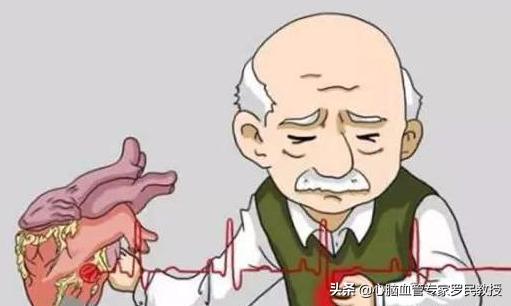
Angina!
Angina is a type of pain that can radiate, and it is difficult for patients to describe their pain area precisely, only roughly only an area, such as the teeth, jaw, neck and shoulders, and left arm.
The duration of angina pectoris is generally not long, except for a few unstable angina pectoris, rarely more than 12 minutes, when the patient feels that the symptoms last too long (more than 30 minutes), nitroglycerin can not be relieved, need to be alert to the possibility of myocardial infarction, at this time you should call the 120 emergency telephone, rapid access to diagnosis and treatment of first aid.
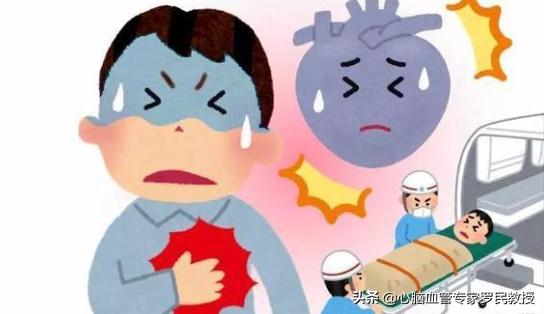
Not all chest pain, is called angina!
Restricted by medical common sense, many patients have a half-understanding of chest pain, the appearance of chest pain like to call themselves angina, in fact, this is a very wrong perception, chest pain is just a symptom, even without considering the nature, location, duration of the above, there are many possibilities, and can not be generalized.
Shingles: if it appears on the chest, it can cause chest pain to appear, mostly burning and tingling.
Spinal disorders; cervical and thoracic spine lesions compressing and irritating nerves may likewise cause chest pain due to obstruction of myocardial blood supply; the two are highly correlated, and may promote triggering if not treated in time, with the patient's symptoms being linked to changes in body position.
Neurosis: Nervous disorder caused by emotional factors, the condition lasts for a short period of time and can be alleviated or disappear after self-regulation.
Intercostal neuralgia: Narrowing and deformation of the nerve channel due to degenerative herniation of the thoracic discs, thickening or ossification of the ligaments can make the inflammation of the intercostal nerves painful, often a transient tingling or burning pain, which occurs or worsens when taking a deep breath or coughing.
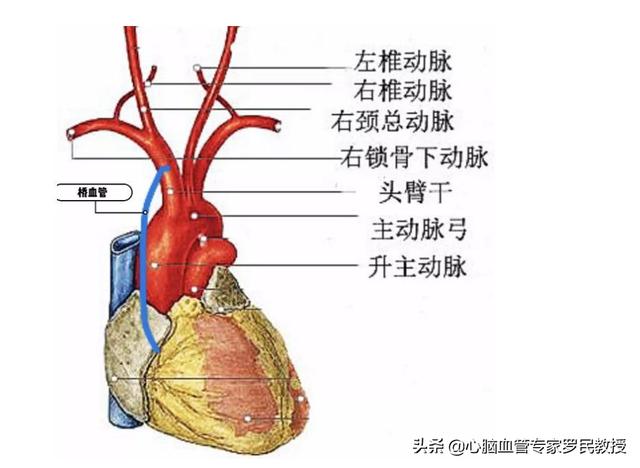
Also even if you do have angina, you don't necessarily need bypass surgery!
As I said in the beginning, angina stands in for a class of patients, and bypass surgery is the last resort emergency measure, with many things and variables in between.
If such patients can actively seek proper treatment at an early stage, they will not only slow down the rapid progression of the disease, but may also be able to etiologically terminate the disease process and achieve a clinical cure.
Angina pectoris is very common in clinical practice and is an important "warning sign" before myocardial infarction, so it is important not to let your guard down, and you should treat it carefully without misdiagnosing or mistreating it.

I hope my answer helps you!
If there's anything you don't understand, comment and private message me!
Angina pectoris refers to a narrowing of the coronary arteries of the heart, which leads to chest pain due to insufficient blood supply to the coronary arteries during activities. This kind of chest pain usually lasts for a few minutes to ten minutes, and can be relieved by resting or taking fast-acting heart pills or nitroglycerin. The most important examination after angina pectoris is the examination of the coronary blood vessels of the heart.
Coronary angiography or coronary CTA will be performed to find out the degree and extent of coronary stenosis and guide further treatment according to the degree of stenosis. Usually, if the stenosis is more than 80%, combined with clear symptoms of ischemia, intracoronary stent implantation plus drug treatment is recommended. In case of 50-60% stenosis of coronary vessels, it is recommended that pharmacologic therapy may be given first. Coronary bypass grafting, which is commonly known as bypass grafting, is only necessary if the coronary artery is severely diseased with multiple vessels.

Angina pectoris is defined as a clinical syndrome caused by a sharp, temporary imbalance in myocardial supply and oxygen demand due to an increase in myocardial load on the basis of fixed stenosis of the coronary arteries. Its symptoms are mainly manifested in the following aspects: its clinical features are paroxysmal pressure-like stuffiness in the anterior thoracic region, mainly located behind the sternum, radiating to the precordial region, the left upper limb, the neck, the left shoulder and the back; it often occurs during exertion or emotional excitement, lasts for several minutes, and the symptoms can be rapidly relieved after resting or taking nitrate drugs.
Angina pectoris is the most common type of coronary heart disease, more common in men, and is divided into stable angina and unstable angina.
Angina pectoris occurs in the coronary artery atherosclerosis combined with fixed stenosis or plaque cracking, when the coronary blood supply can not meet the needs of myocardial metabolism, especially in the labor, emotional excitement, satiety, cold and so on, can cause myocardial ischemia ischemia and hypoxia, acute and transient ischemia ischemia will cause angina pectoris.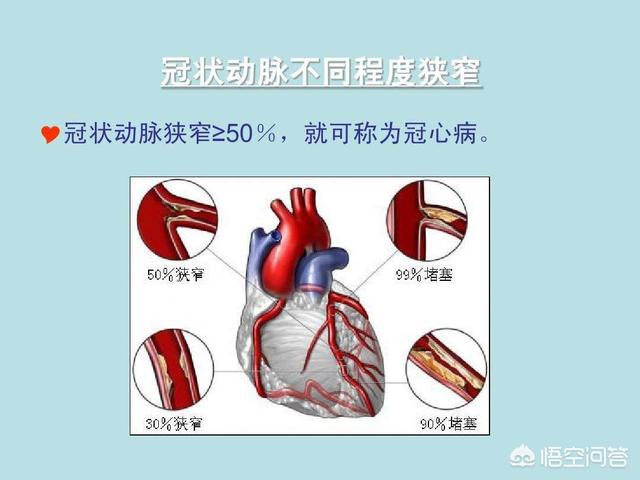
Angina pectoris is characterized by episodes of chest pain as the main clinical manifestation, and the pain istypical performanceThere are the following: 1. mainly after the sternum, precordial area palm size range, the boundary is not clear, often to the back of the left shoulder, left arm medial and ulnar side of the hand, cervicopharyngeal or mandibular radiations, chest pain site is more fixed, rarely change back and forth; 2. Chest pain is often oppressive, stuffy or constrictive, sometimes there can be a burning sensation, can be accompanied by a sense of near death, generally do not behave as a pinprick or knife stabbing sharp pain; 3. angina pectoris more than a causative factor, such as physical labor or emotional agitation, full meal, cold, etc., generally symptoms occur at the time of labor or agitation rather than after exertion, each episode of similar conditions occur. Such as physical labor, emotional excitement, full meal, cold, etc., generally symptoms occur in the labor or excitement at the time rather than after exertion, each attack often occurs under similar conditions with similar symptoms; 4. Angina generally lasts from a few minutes to more than ten minutes, mostly three to five minutes, and rarely exceeds half an hour; 5. Stable angina is generally relieved under the elimination of the causative factors such as cessation of activities, and shedding contains the use of Nitroglycerin or nitrate drugs can also be relieved within a few minutes; but unstable angina is more difficult to relieve. The above are typical symptoms, but in the clinic there are many patients with atypical symptoms, especially in elderly women and diabetic patients, which can only be manifested as chest tightness, panic attacks and so on.
When angina symptoms persist without relief, be alert for acute myocardial infarction, which has a very high mortality rate and requires emergency medical attention.
curing:
One,Treatment of flare-ups
1. Rest:Rest immediately when the symptoms flare up, usually patients can be relieved.
2. Drug therapy: sublingual nitroglycerin or nitrate.
ii,Treatment in remission
1. Lifestyle adjustments: avoid triggers, avoid full meals, stop smoking and limit alcohol, relaxation, light diet and so on.
2. Drug treatment
①. Drugs to improve myocardial ischemia: metoprolol or bisoprolol, nitrates, calcium channel blockers.
②. Drugs that improve prognosis:Include aspirin, poliovirus, statin, ACEI, or ARB.
3. Surgical treatment: including heart bypass or when stents.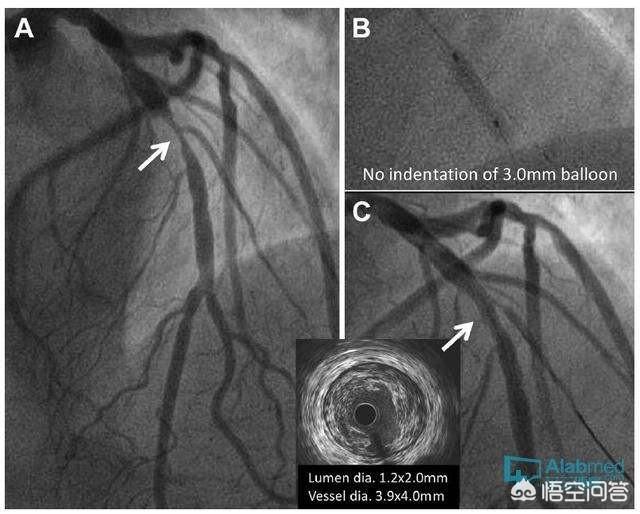
I'm glad to answer your question, you can follow me, Ask of the Ask, to give you more medical knowledge!
Angina is the most common clinical manifestation of ischemic heart disease.Ischemic heart disease is heart disease caused by myocardial ischemia and hypoxia due to functional or organic lesions of the coronary arteries, also known as coronary heart disease, or coronary heart disease. The main cause of coronary heart disease is atherosclerotic lesions of the coronary arteries, resulting in blood vessel narrowing. In addition, coronary artery inflammation, thrombosis and coronary artery spasm and other causes can also lead to coronary artery lumen narrowing.
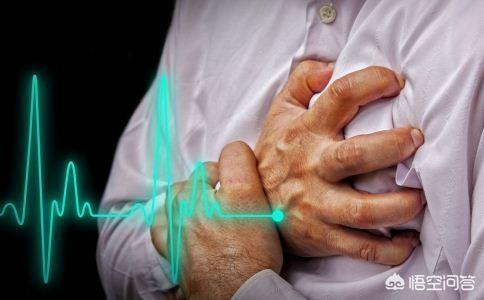
Typical symptoms of angina pectoris are paroxysmal retrosternal crushing pain that radiates from the chest to the jaw, neck and left upper extremity. If the attack persists without timely relief, it may develop into acute myocardial infarction.
Under normal circumstances, the increase in myocardial oxygen consumption can be compensated by increasing coronary blood supply, but after coronary artery disease due to narrowing of blood vessels, wall hardening and endothelial damage, coronary artery diastolic function is weakened, the reserve function of the coronary artery circulation decreases, which can not satisfy the need to increase myocardial oxygen consumption, resulting in an imbalance between the myocardial oxygen demand and supply, leading to myocardial relative or absolute ischemia, hypoxia, and the accumulation of metabolite products (eg, lactic acid, pyruvate, histamine, potassium), stimulating the myocardial nerve endings to cause pain. Metabolic products (such as lactic acid, pyruvate, histamine, potassium, etc.) accumulate and stimulate myocardial nerve endings causing pain.
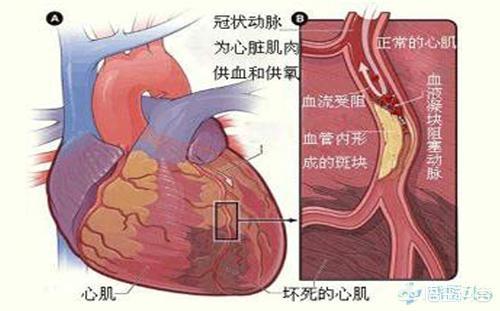
clinicallyDrugs for angina pectorisMain Inclusions:Nitrate Minerals(Nitroglycerin),beta-blocker(propranolol),Calcium channel blockers(nifedipine, verapamil, diltiazem),antiplatelet and thrombotic drug(aspirin, ticlopidine, clopidogrel) andOther anti-myocardial ischemic drugs(carvedilol, nicorandil, enalapril, etc.).

Hello.
First to correct your statement. The corollary to angina is not a heart bypass, theAngina pectoris is a clinical syndrome caused by insufficient blood supply to the coronary arteries and acute, temporary ischemia and hypoxia of the myocardium, which is the essence of angina pectoris.Angina pectoris occurs when coronary blood flow fails to meet the needs of myocardial metabolism, causing acute and temporary ischemia and hypoxia of the myocardium.
It is often triggered by physical labor or emotional excitement. Angina may also be triggered by satiety, cold, smoking, tachycardia, and shock.
Whether or not heart bypass is performed depends on the patient's physical condition. In some cases, the patient's condition is well controlled or in the early stages of coronary artery disease, and cardiac bypass is not necessary at all. As long as the patient takes Xincang-type drugs for a long period of time, and adheres to a low-salt and low-fat diet, the patient's condition can be controlled. However, some patients are already in the advanced stage of coronary artery disease after examination, and the effect of drug control is not obvious. Surgery must be used to effectively control the development of plaque. If the patient is young and the blockage is not that serious, the doctor will recommend stenting as much as possible, because stenting is a minor medical procedure, while cardiac bypass surgery is a surgical procedure.

The cause of angina pectoris is due to the narrowing of the coronary arteries, which is a disease that can only be formed after a long period of accumulation. Therefore, from now on should be prevented, do low salt and low oil, appropriate exercise, early to bed and early to rise, happy mood.
This question and answer are from the site users, does not represent the position of the site, such as infringement, please contact the administrator to delete.